Arts-based revitalization, community building, network strengthening, commodification, and Artomatic
I have been meaning to write about the irony of Artomatic's being commodified by business improvement districts looking for publicity and attention and verve. Artomatic is the massive temporary arts exhibit involving more than 1,000 artists, and is currently located about one block from the Nationals Baseball Stadium in Southeast DC.
If you have read Jane Jacobs' Death and Life of the Great American City, the point she made about "a large stock of old buildings" as being essential to the vitality of center cities has to do with the economics of property and the economics of innovation, not because she was a historic preservationist.
Old buildings are paid off and their running costs are relatively low compared to new construction. Almost by definition, the creative types, people with ideas, are short of funds and have to husband their resources, and need access to low cost spaces in order to seed innovation.
That's why arts "districts" and revitalization efforts tend to be in less popular and less attractive and less valuable, even "blighted" places, like old industrial districts that have lost their cachet due to deindustrialization and the depopulation of center cities. Places like Brooklyn, Pittsburgh, Baltimore, and to some extent Philadelphia are known for this. See:
-- Social Impact of the Arts Project - University of Pennsylvania
-- Cultivating “Natural” Cultural Districts
-- Penn Avenue Arts Initiative (Pittsburgh)
-- The Station North Arts and Entertainment District, Baltimore, Maryland
So you expect that these places will look like this:

Greenpoint, a traditionally Polish neighborhood in Brooklyn, is drawing in younger residents. Unaffected by the recent building boom in neighboring Williamsburg, Greenpoint is full of low-rise buildings. A group pauses to listen to music pouring out of a loft space on North 15th Street.Photo: Jessica Dimmock for The New York Times
Not like this:
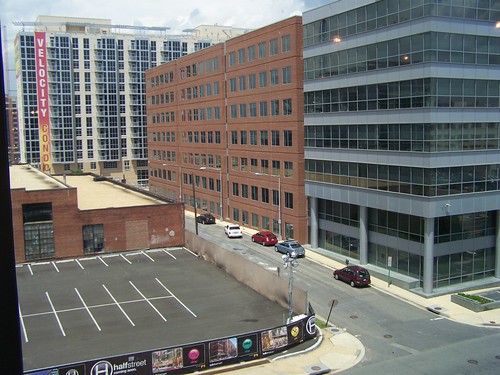
Above: Redeveloping Capitol Riverfront District, along 1st Street SE. Below: M Street SE, looking eastward.
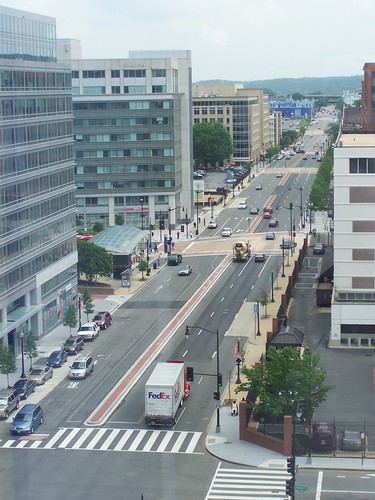
Although there is no question that as the areas get "tamed" by the artists and become popular, often artists get displaced in favor of more profitable uses, and by people with more money able to outbid the creatives.
The dissatisfying aspect of DC is how it is such a good example of Jane Jacobs' thinking about urban economics and strong real estate markets. Because of the building height restriction and the fact that DC was never very industrial a la cities like Detroit, there is a limited stock of large old buildings to begin with, but there is a constant vortex of "space reproduction" and expansion of the central business district in ways that mostly tear down old warehouse type buildings in favor of faceless office buildings and the conversion of the old buildings that remain into high rent office space, such as the buildings depicted below.
The first is the Old Judd & Detwiler printing plant and the second is the warehouse for the now defunct department store chain, Woodward & Lothrop, both on 1st Street NE. The former is rented to Sirius Satellite. The latter is mostly rented to federal agencies such as the Equal Employment Opportunity Commission.
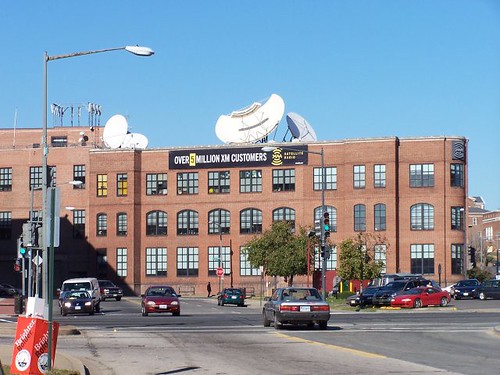
Photo by Dan Malouff.

So it's ironic that business improvement districts in Crystal City, NoMA and now the "Capitol Riverfront" have used Artomatic to promote their commercial districts, which are designed to do everything that they can that is counter to Jane Jacobs basic points of supporting diversity in urban settings, by building at the expense of diversity expensive housing, office, and retail space, and reproducing space away from just about anything that might be innovative or supportive of the creative class and the producing artist.
Artomatic needs space, and this is one of its only options. But organizationally they are getting used. And they need to figure out how to leverage this temporary access into something more permanent. In other words, if you're getting used, get something out of it that is more permanent than temporary, more than just a bit of publicity.
It is incredibly ironic that the Washington Sculpture Center and the Washington Glass School were located about one block away from where Artomatic is located in 2009, on what is the "third base" in the brand spanking new Washington Nationals Baseball Stadium.
Today, the Glass School is in warehouse space in Mount Rainier, Maryland in the Gateway Arts District there, and the Washington Sculpture Center is defunct.
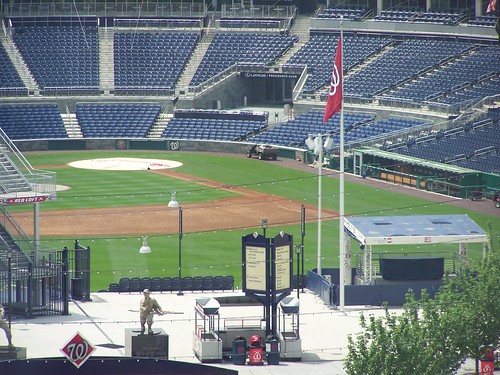
For more about this, see the past blog entries "More Arts Displacement" from 2006 and "Arts vs. arts-plus for commercial district revitalization" from 2008.
Also I find these efforts, the Free Range project in London, and the Reno Artown festival to be a bit more broad minded (see the AP story "Reno's Artown fest: All of July, and mostly free"), more focused on leveraging an event to build and strengthen an arts community.
This reminds me about something that the Center for Science in the Public Interest did to reposition the organization in the late 1970s. CSPI is a nutrition and health advocacy group. From 1975-1977, the organization sponsored "Food Day," an annual event from 1975-1977, "spawning thousands of activities around the country concerning nutrition, hunger, and agribusiness. There were newspaper articles and television programs, rallies in city parks, a book, even a healthy White House buffet dinner."
But the organization figured out that they spent the entire year organizing for one day, and that it was difficult to build a broader movement around a brief albeit active moment. So they stopped doing food day and repositioned around nutrition advocacy and more organized and directed social change activities. (In the mid 1980s they went through another repositioning which led to the organization developing one of the most stable funding bases in the U.S. nonprofit community.)
Artomatic is cool. But building a real "creative community," not one that is important to business only to the point where it can be commodified and the marginal return to real estate profit remains positive is not something that Artomatic seems to be focused on. (Also see "Cultural resources planning in DC: In the land of the blind, the one-eyed man is king" from 2007.)
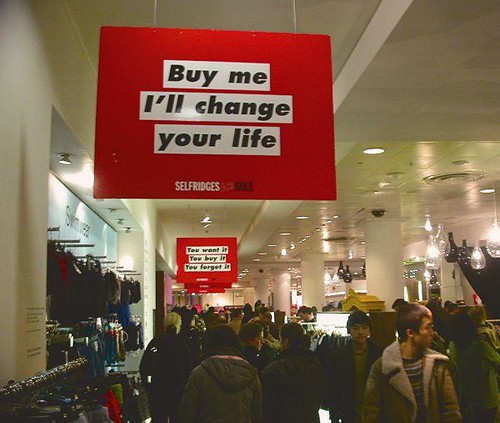
Barbara Kruger: Selfridges campaign; "Buy me I'll change your life" and "You want it you buy it you forget it."
Labels: agglomeration economies, arts-based revitalization, building a local economy, change-innovation-transformation, urban economics



0 Comments:
Post a Comment
<< Home